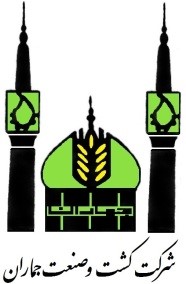Among the many types of land-based capitalization, agribusiness is the more general term that has been proposed in the Goldberg and Davis doctrine of Harvard Business School in the year two and derives from a two-word concept (Agribusiness and Agro). -industry) and the “hegemony of technocracy and value chain theory” in agricultural production.
Corporate governance structures with corporate governance structures and high technology levels have been in place in developed countries since the beginning of the 5th century and started six decades ago with a capital focus and attraction of multinational corporations in Iran. Agro-industries are among the first large agricultural-industrial units in which value-added chains combine agricultural, industrial and service operations across all stages of production, maintenance, processing, marketing, distribution and sales of large-scale products. (Economic and technical) Fully market-oriented within a single organizational and management framework. Management Separation (Fully Professional)
Ownership, unit size, organized structure and formal and specialized management, high level of information and technology and development, linking agricultural production with backward and past industries in the form of chains are major features of agro-industrial units.
From a historical point of view, the development of large agricultural units called agro-industry attracted Iranian and foreign investment for the Fourth Plan (1 to 2) before the Islamic Revolution. Establishment of Iran-California Companies (TransWorld California) as the First Agro-Industry, Iran-America (Hashem Naraghi Group), Herd, International Iran, Shares with Similar Shareholders (Iran Agricultural Development Bank, National Bank of New York, Iranian Bank Tehran, World Agricultural Development Corporation, Jandiz Company, Dow Chemical Company, Taleghani & Partners, Coates Company, Shell Company, etc. are among these.
In this regard, the Ministry of Water and Power approved the “Law on Establishment of Sub-Dams” under the Ministry of Water and Power in the same year in the Dezful area.
The Dez Dam aquifer lands were put into operation. In regulatory contracts, the government pledged to provide irrigation canals up to 2 hectares (water canals) and service roads up to 1,000 hectares for investors who had invested 6 years in rent.
Other obligations of the government were “transmission of electricity, gas and biogas grids” and “customs facilities” for machinery entry. The investor was also obliged to provide and consume the capital required to be invested in Iranian capital in the first five years. The investor was responsible for the construction of in-farm distribution channels, land leveling and equipping of farms, in-farm service roads, direct employment per 1 hectare, and the use of external staff of up to 5%. Of course, laws such as the Law on the Establishment of Sub-Dam Land Companies, the Restructuring Law and the Duties of the Ministry of Agriculture and Natural Resources, and the dissolution of the Ministry of Natural Resources, the Law on Agricultural Extension at the Arctic also encouraged the establishment of crops and industries. Following the Islamic Revolution, these companies were also eliminated under the law “Ownership and Use of Lands in Dez Dam Dam and the Contract for Agriculture” and the two 6,000 hectares of land owned by two Ministry of Agriculture affiliated companies. Farmers named Martyr Rajai and Martyr Beheshti and others were transferred to farmers with previous crops and individuals to small plots. The first government-run agribusiness company to produce sugar cane in Khuzestan was founded in the mid-1980s and was launched in 2007 and renamed Haft Tapeh Sugar Sugar Project. In the following years, Neykarkarun, Jiroft, Moghan,
“Pars 2” and “Sefidrood Agriculture and Livestock” were formed in the second half of the decade and the first half of the decade with state capital and management. Mianab Dezful Sugar Cane Company, which was planned and put into operation in the years before the Islamic Revolution, is being refined at Haft Tapeh Cane. After the revolution, two Shahid Raja’i and Shahid Beheshti agribusinesses and seven sugarcane agribusinesses and related industries were planned and put into operation by the Ministry of Agriculture in the 1980s and 1980s with the participation of banks. Overall, the formation of these companies has had various economic, social, technical and environmental impacts and consequences for many years, but has had significant results in terms of production performance, such as the cultivation of Shahid Rajaee and Shahid. Beheshti are recognized as the best production units in the region and their average production performance is significantly higher than the average.
It is noteworthy that the performance of sugarcane production in Khuzestan sugarcane development company was higher than expected during its activity.
That has changed since the enactment of Principle 1 (1) of the Constitution of the state of ownership and management of these companies. According to the law, the transfer of these companies to the private sector was on the government’s agenda. According to the latest surveys carried out by Pars agribusinesses to the National Bank, Mesibab to Agricultural Bank, Shahid Beheshti to Relay and Jiroft and Shahid Rajai to Central Union of Rural Production Cooperatives and the rest are being transferred.
Having a special law (Establishment of Sub-Dam Land Companies Act 1), Cultivation (Extensive Cultivation) in the lands of agribusiness companies, combining agriculture and industry and having appropriate value added, performing infrastructure operations such as canals, drainage and leveling Lands and things like that



